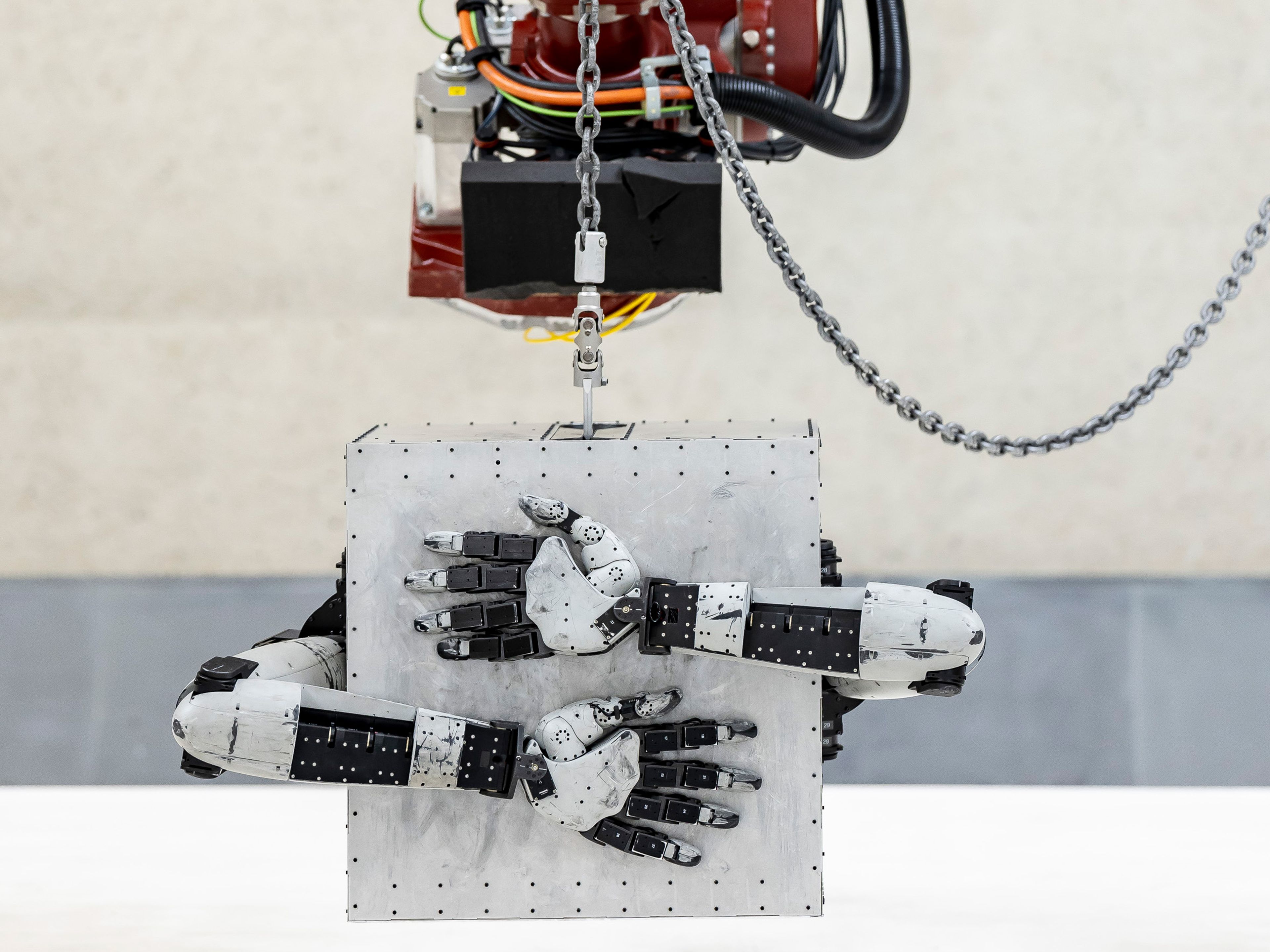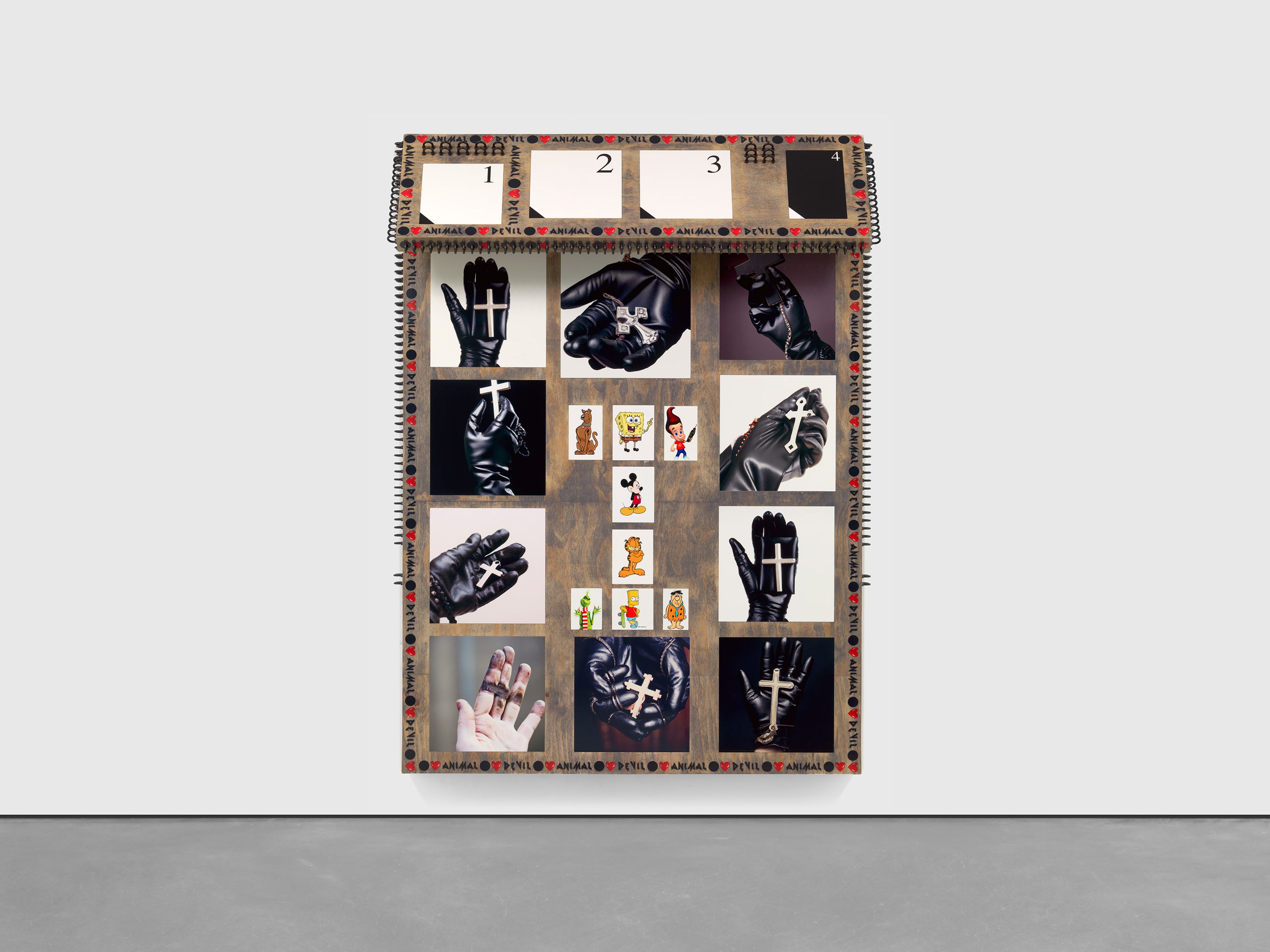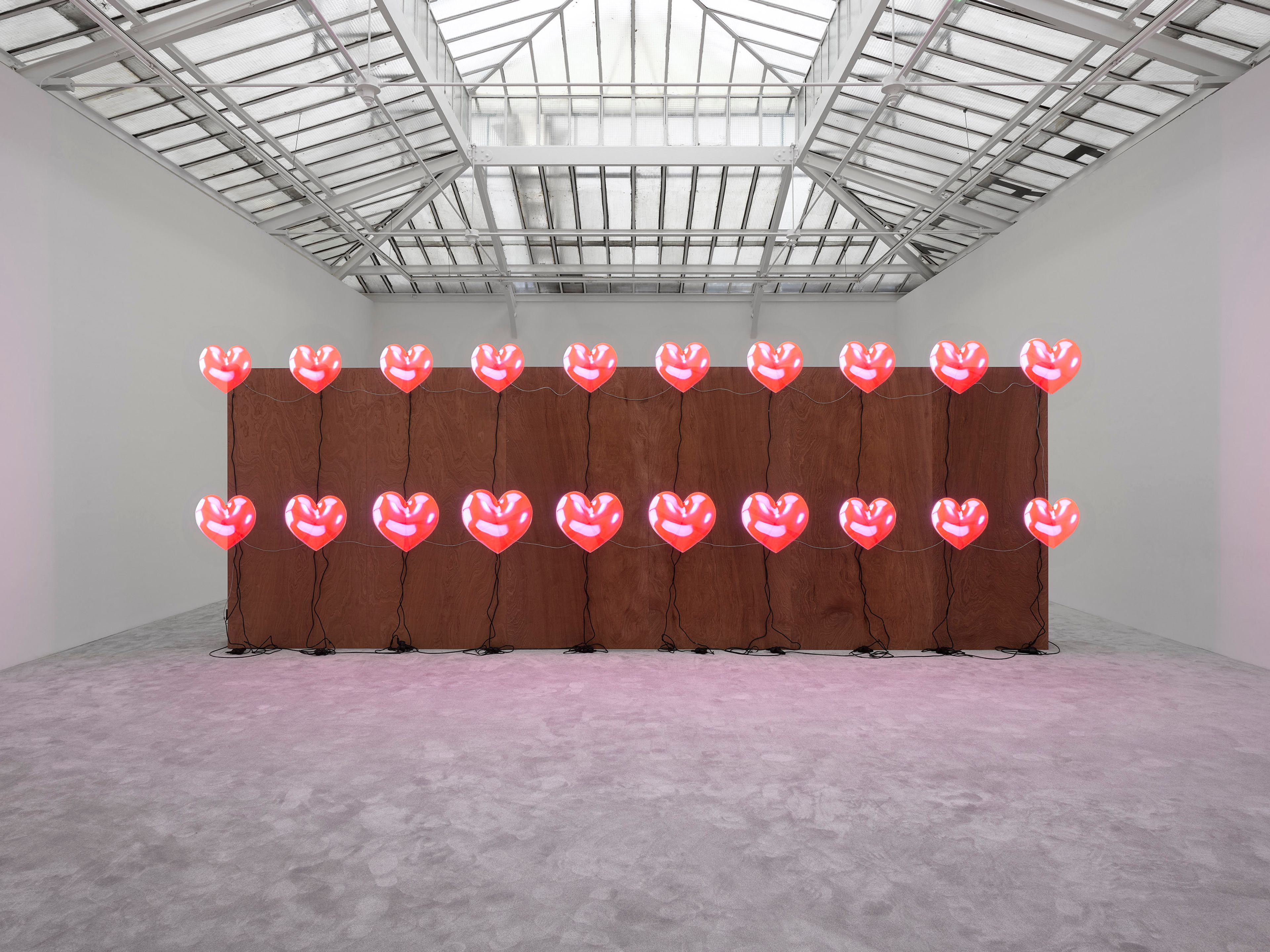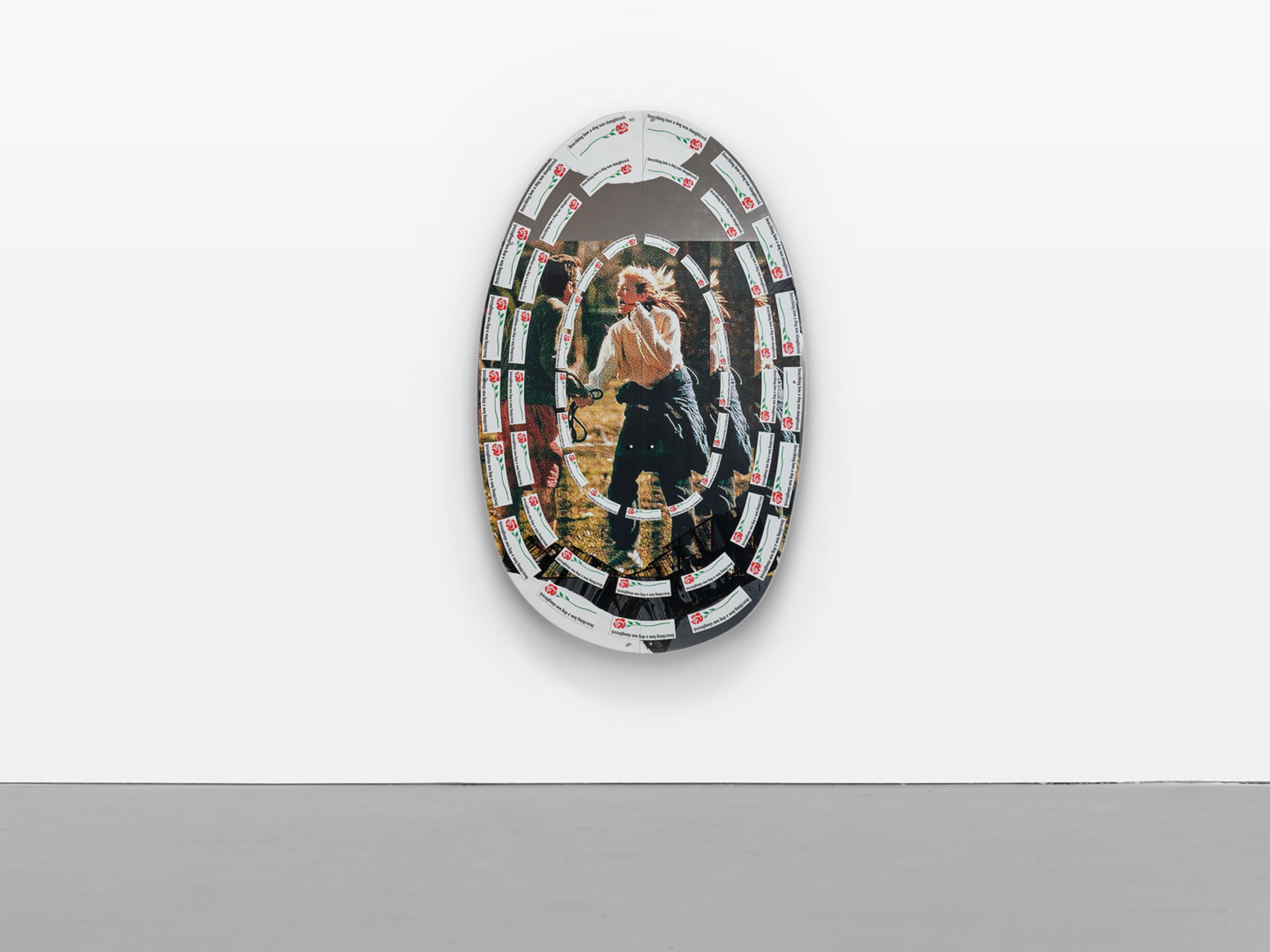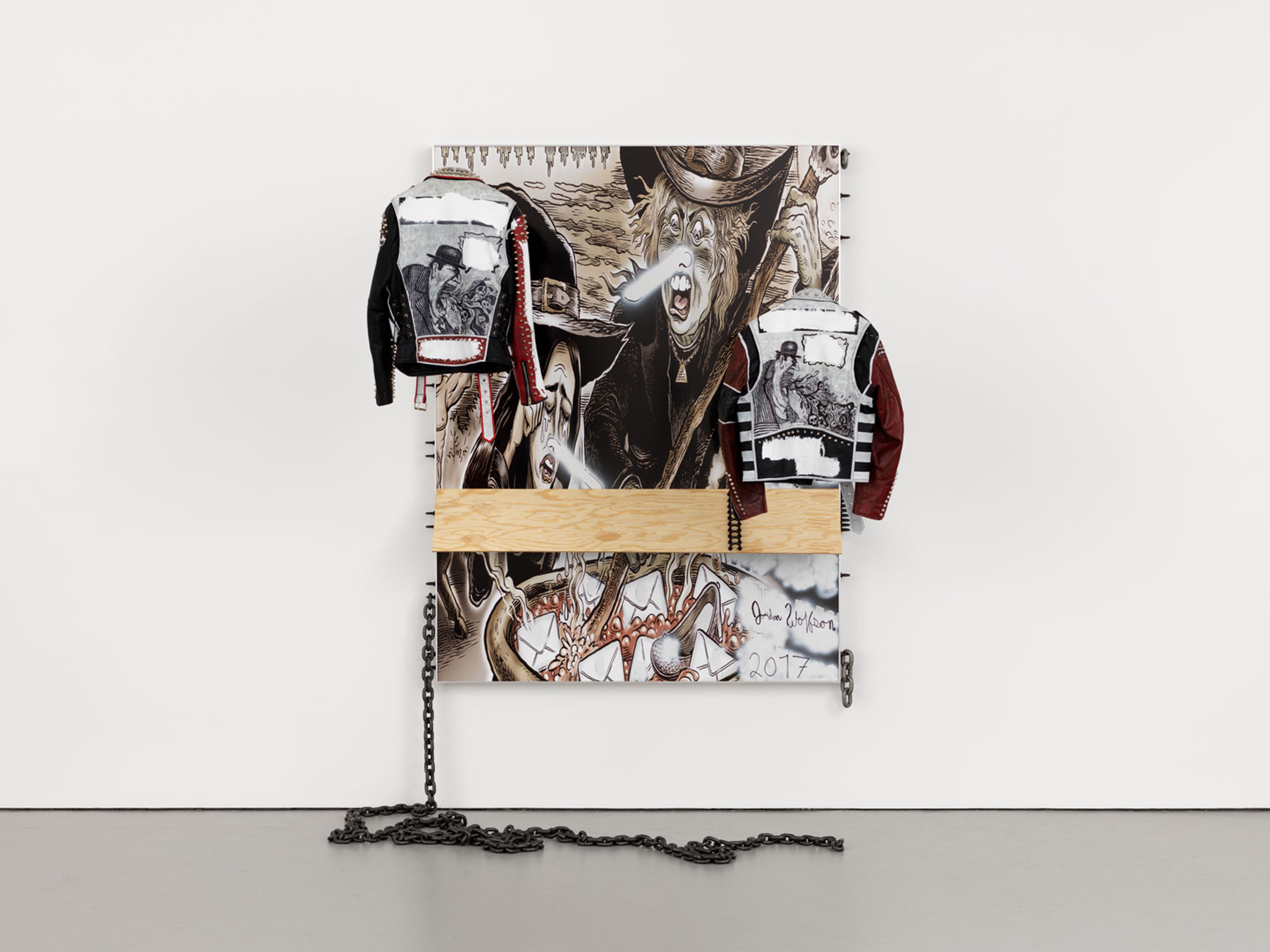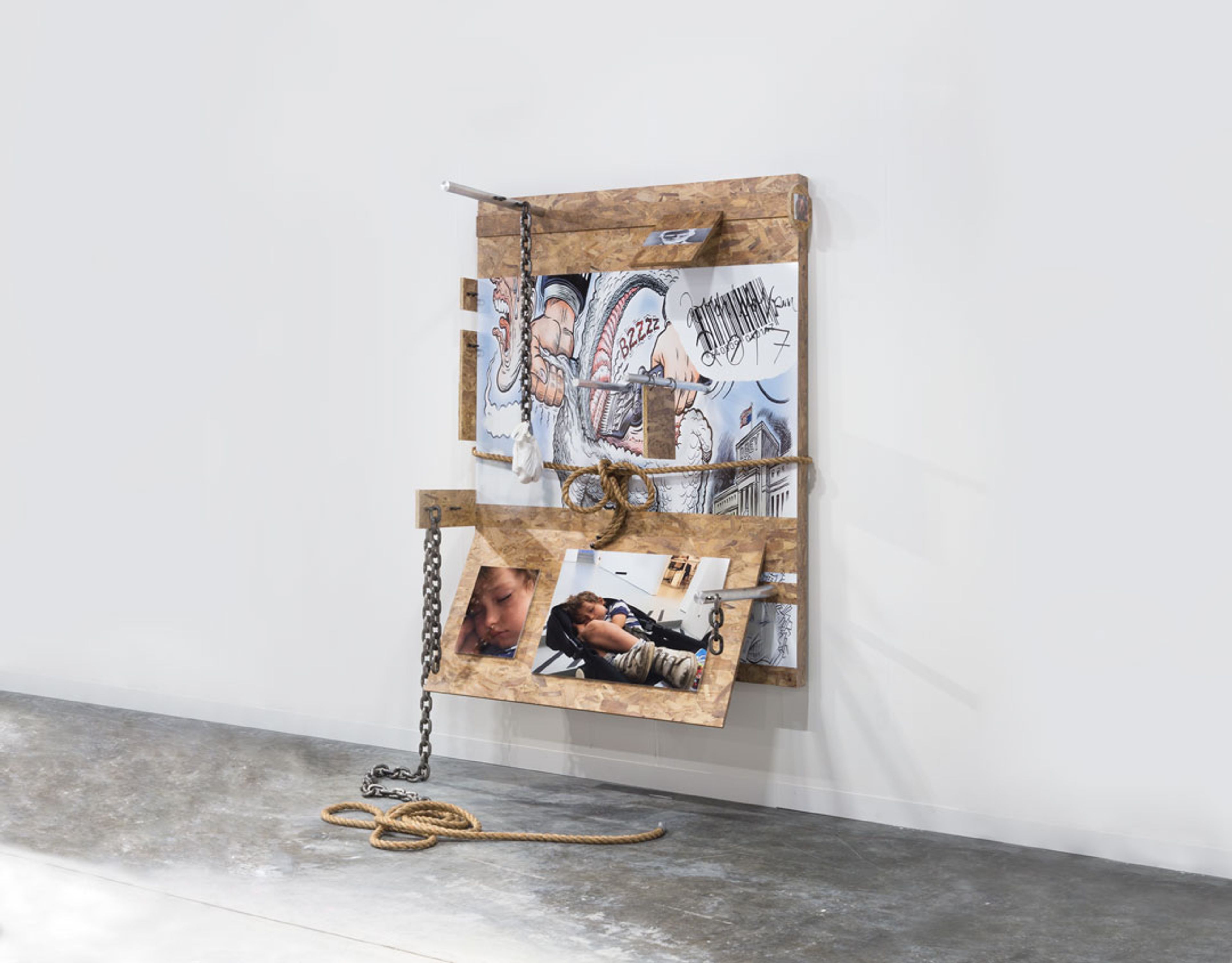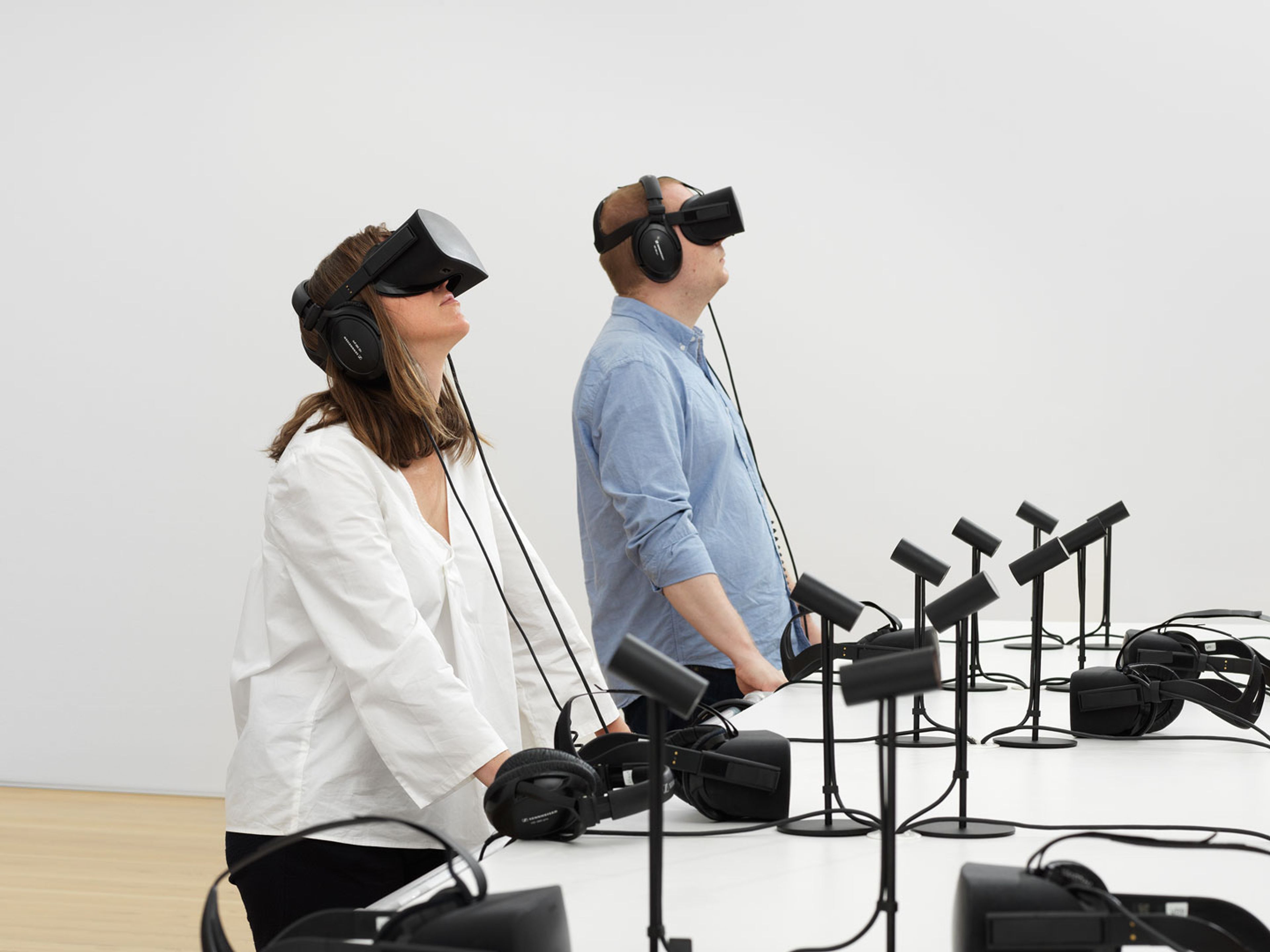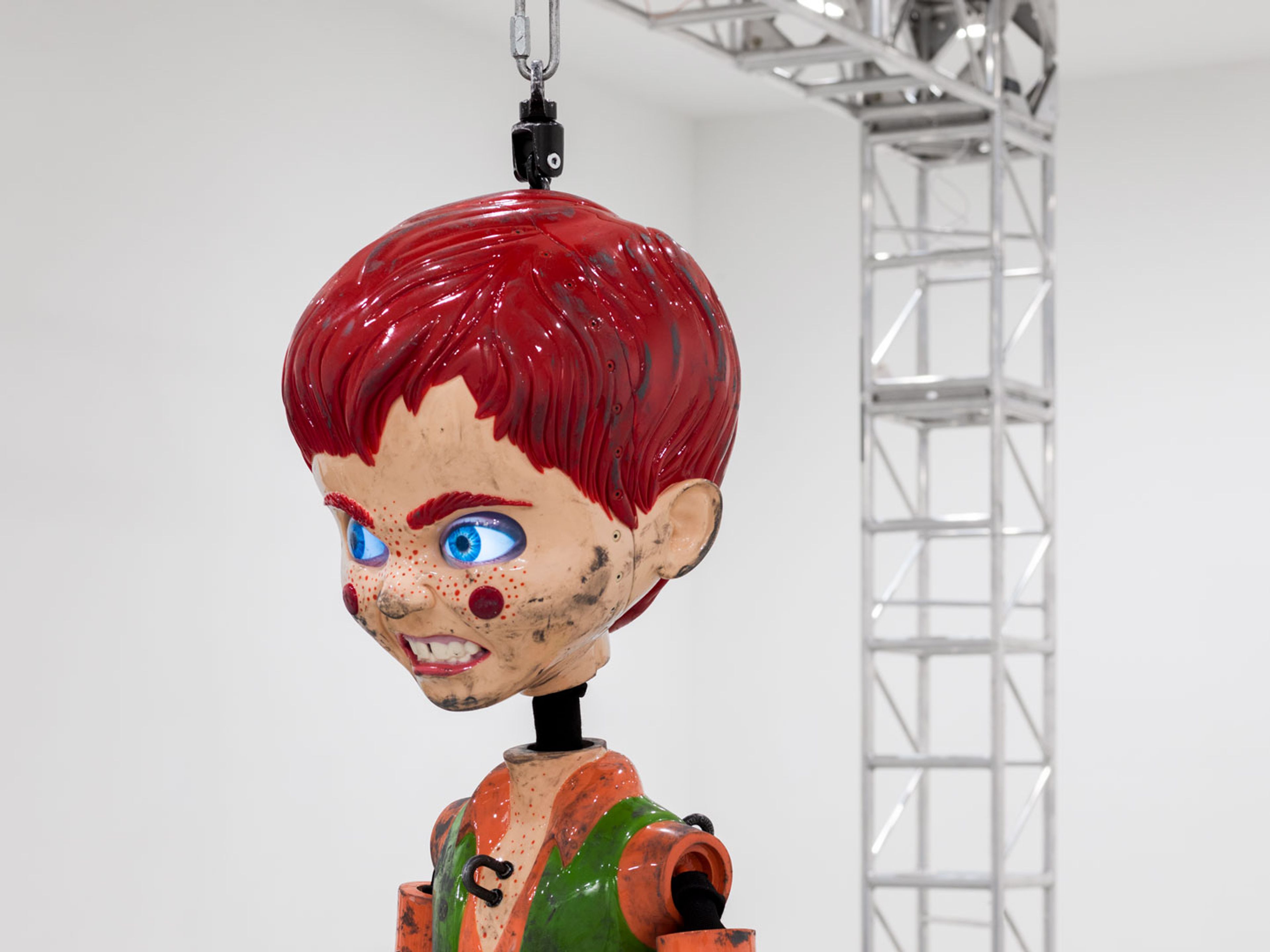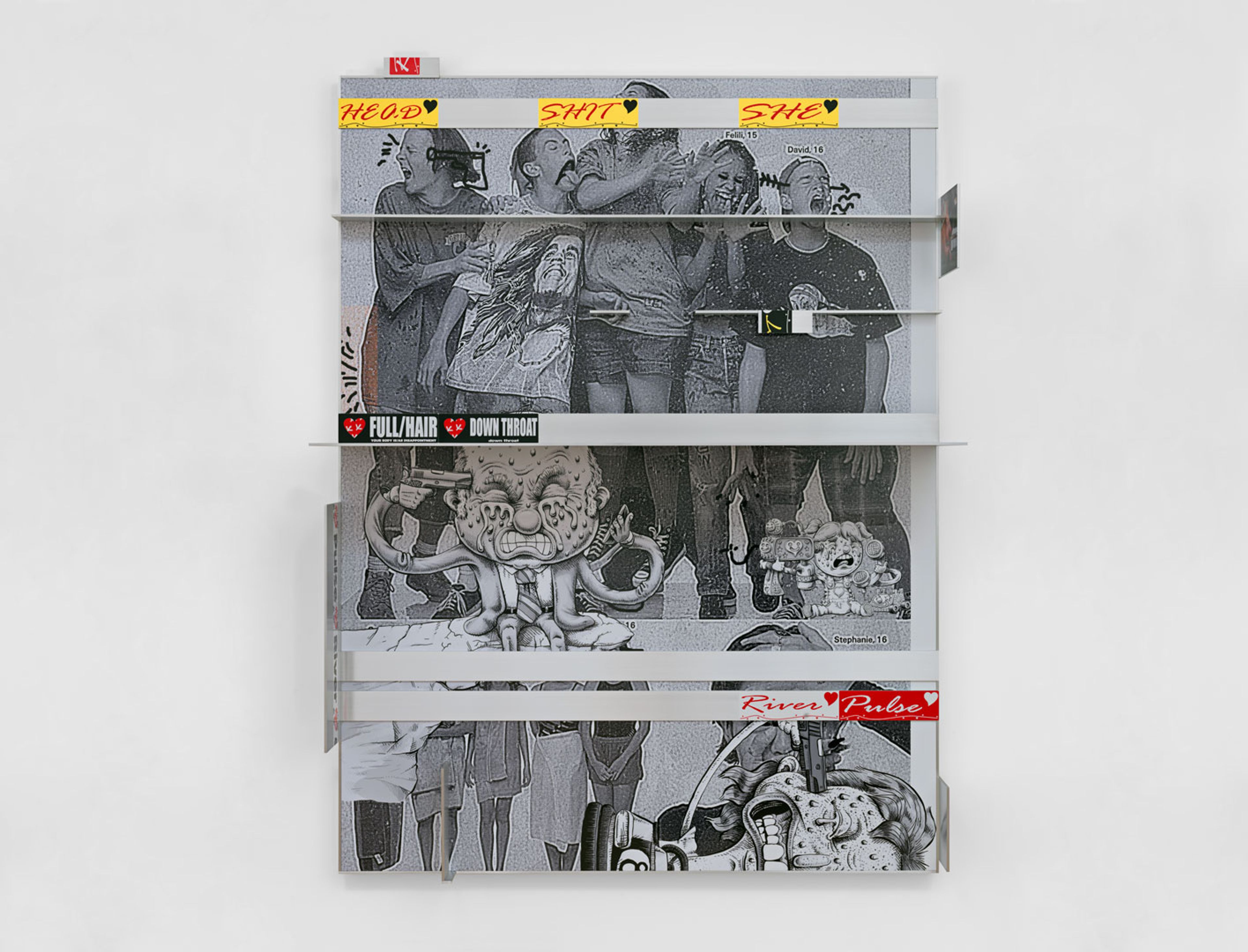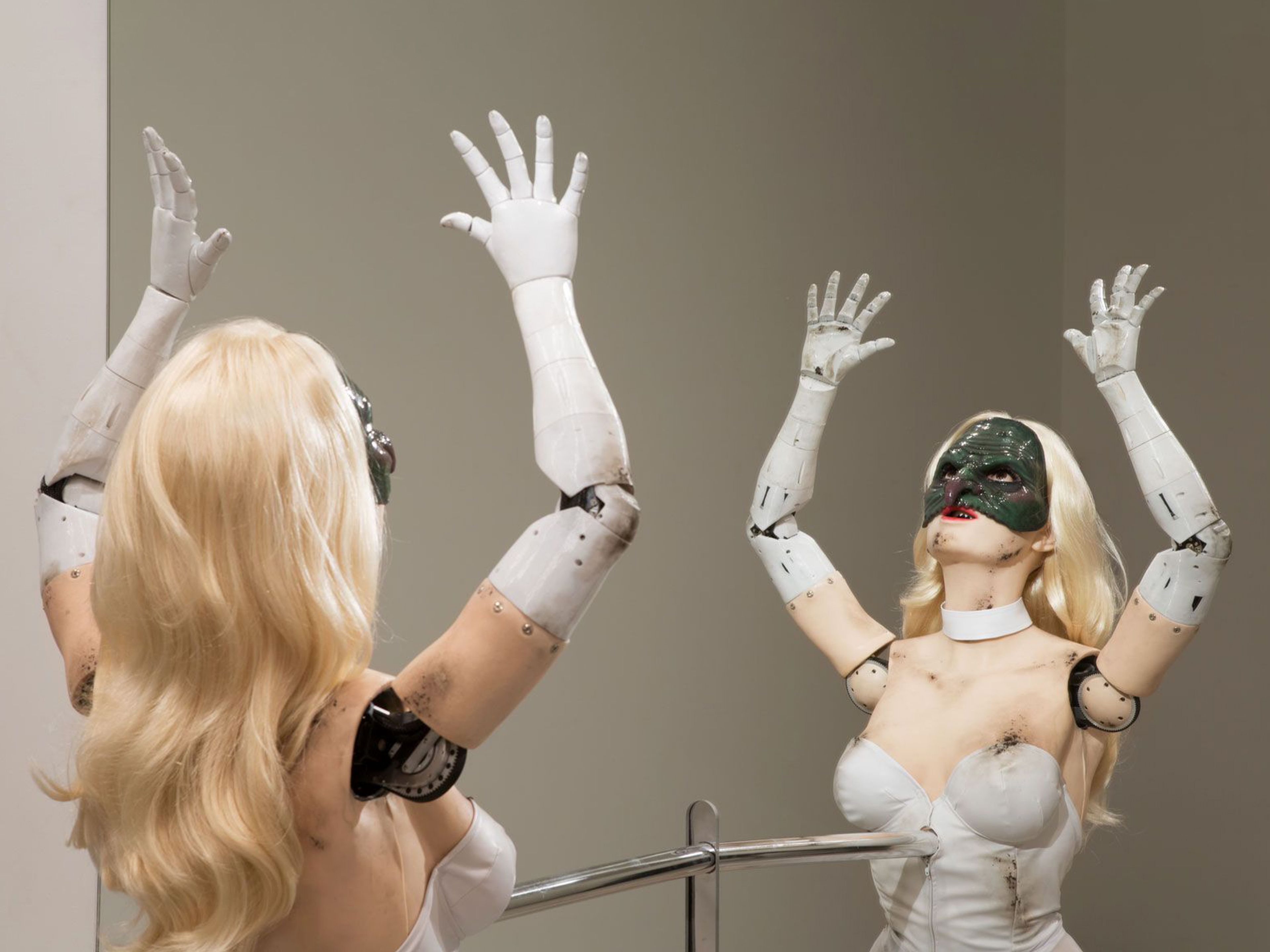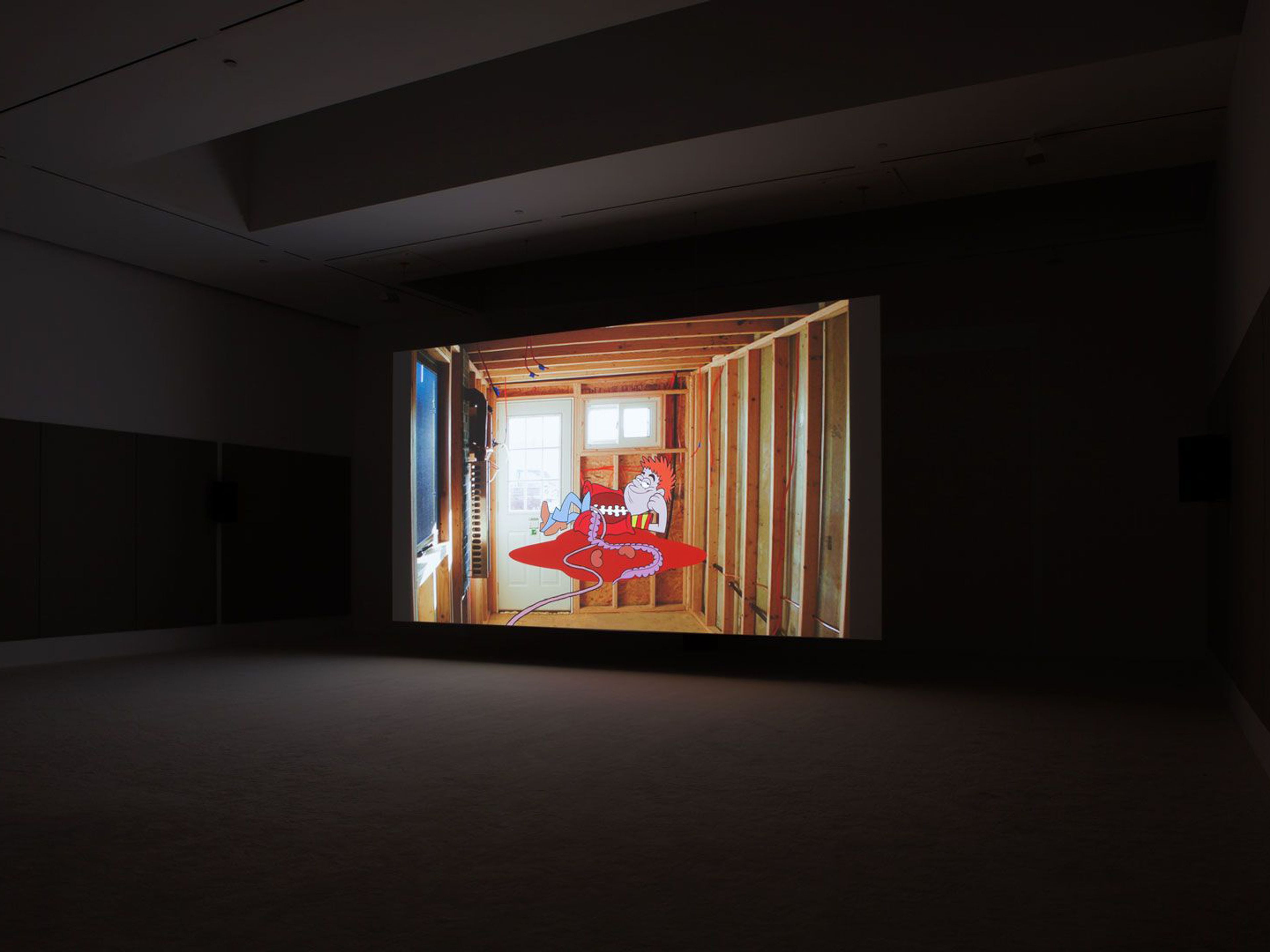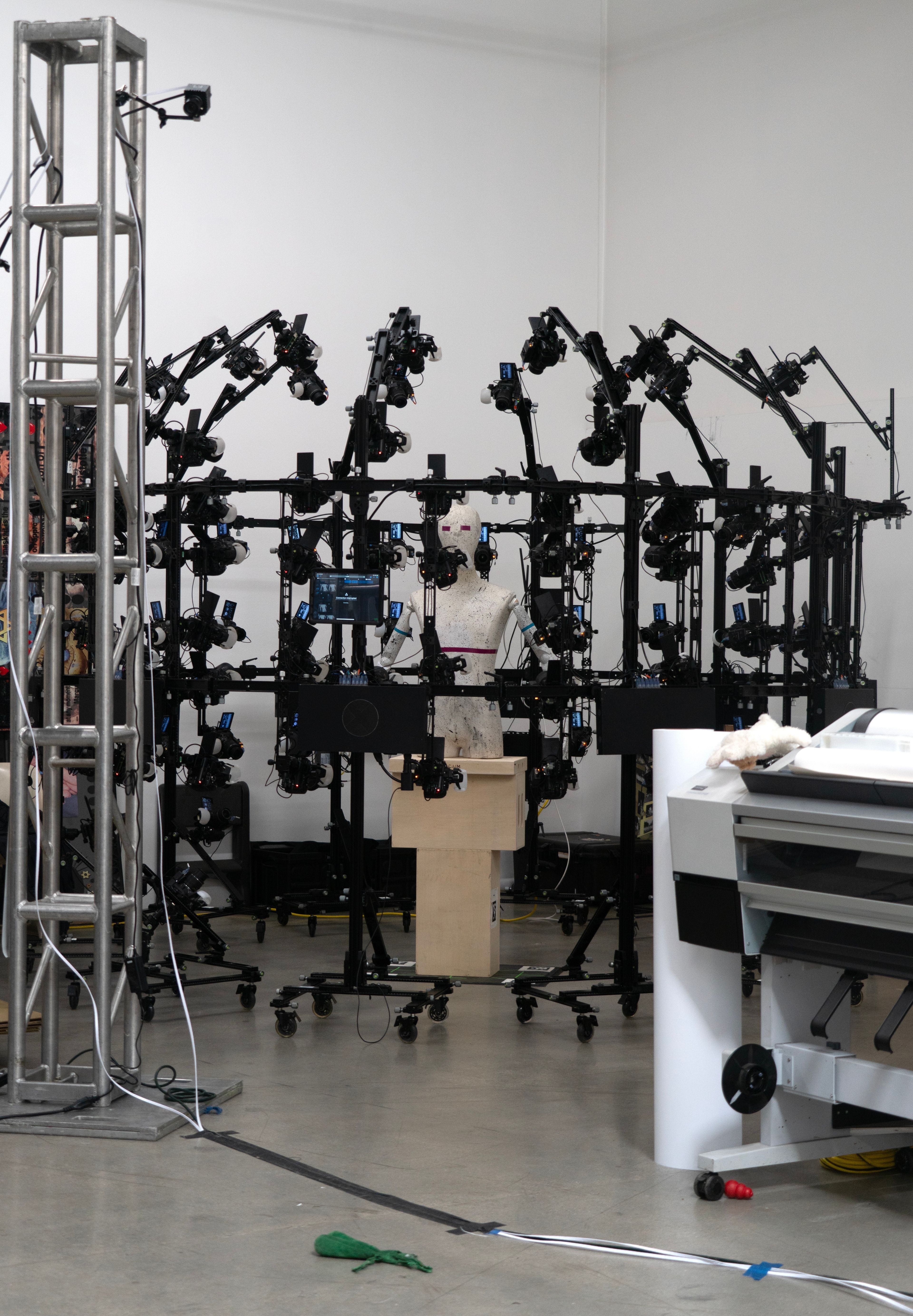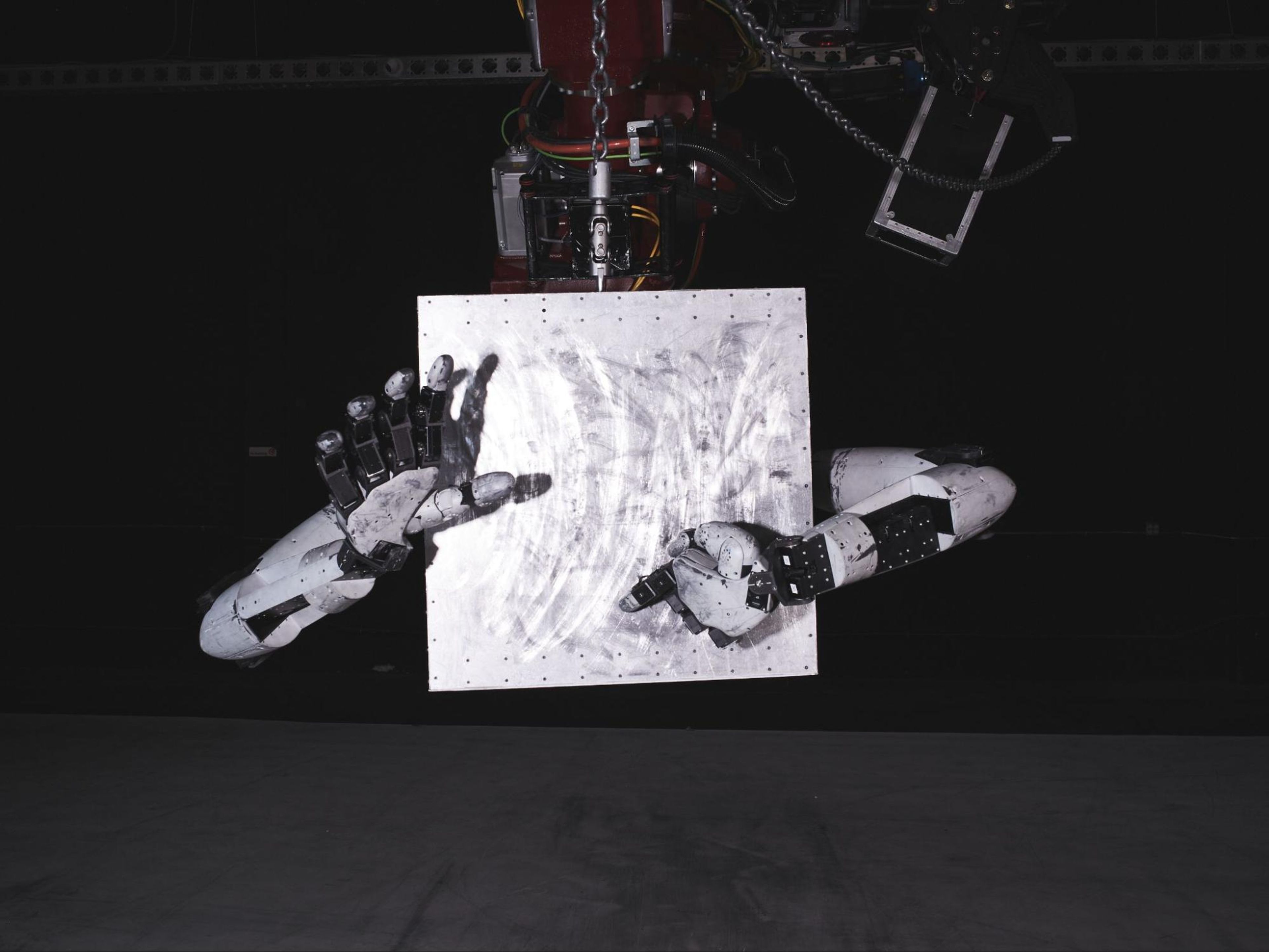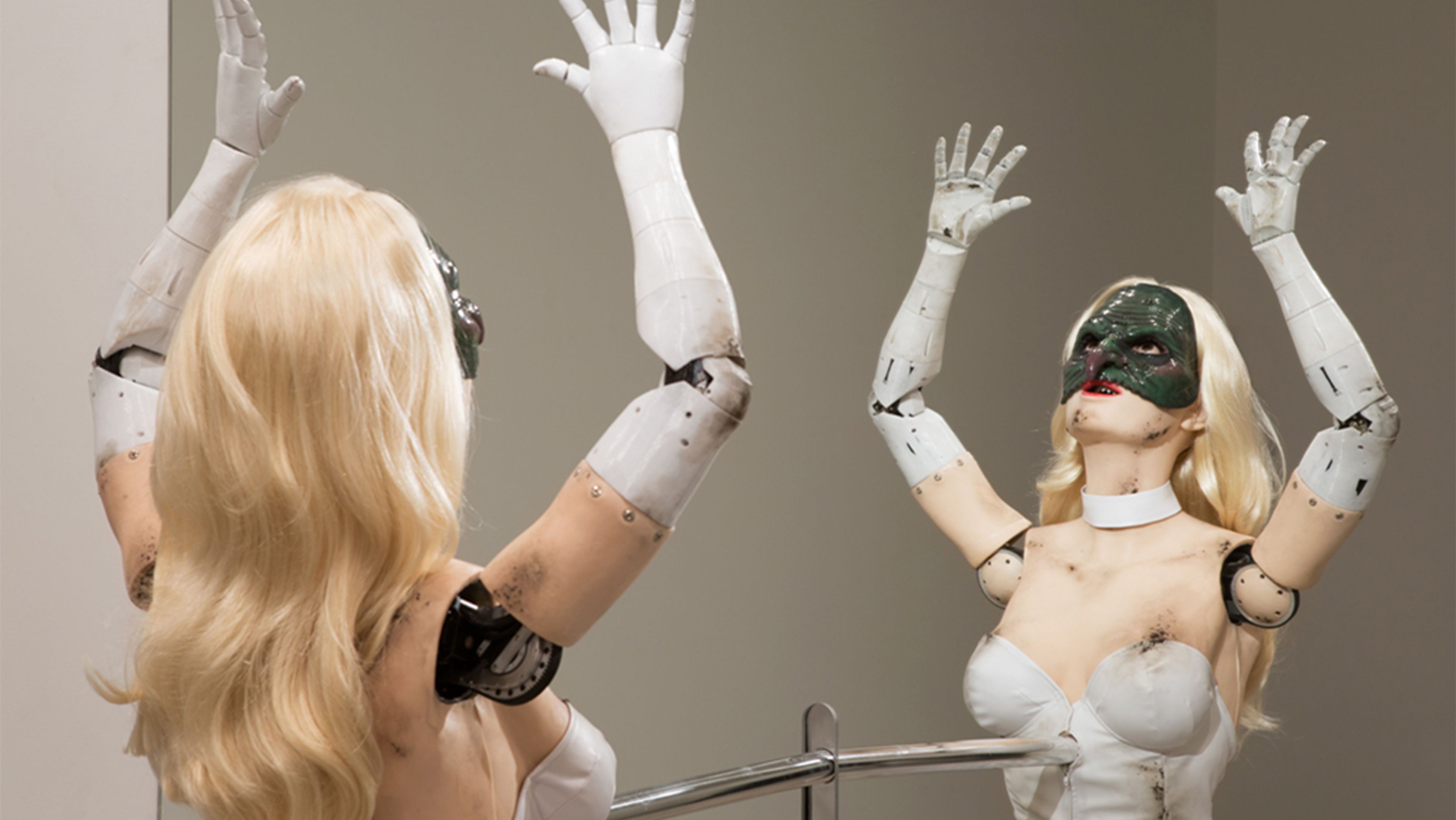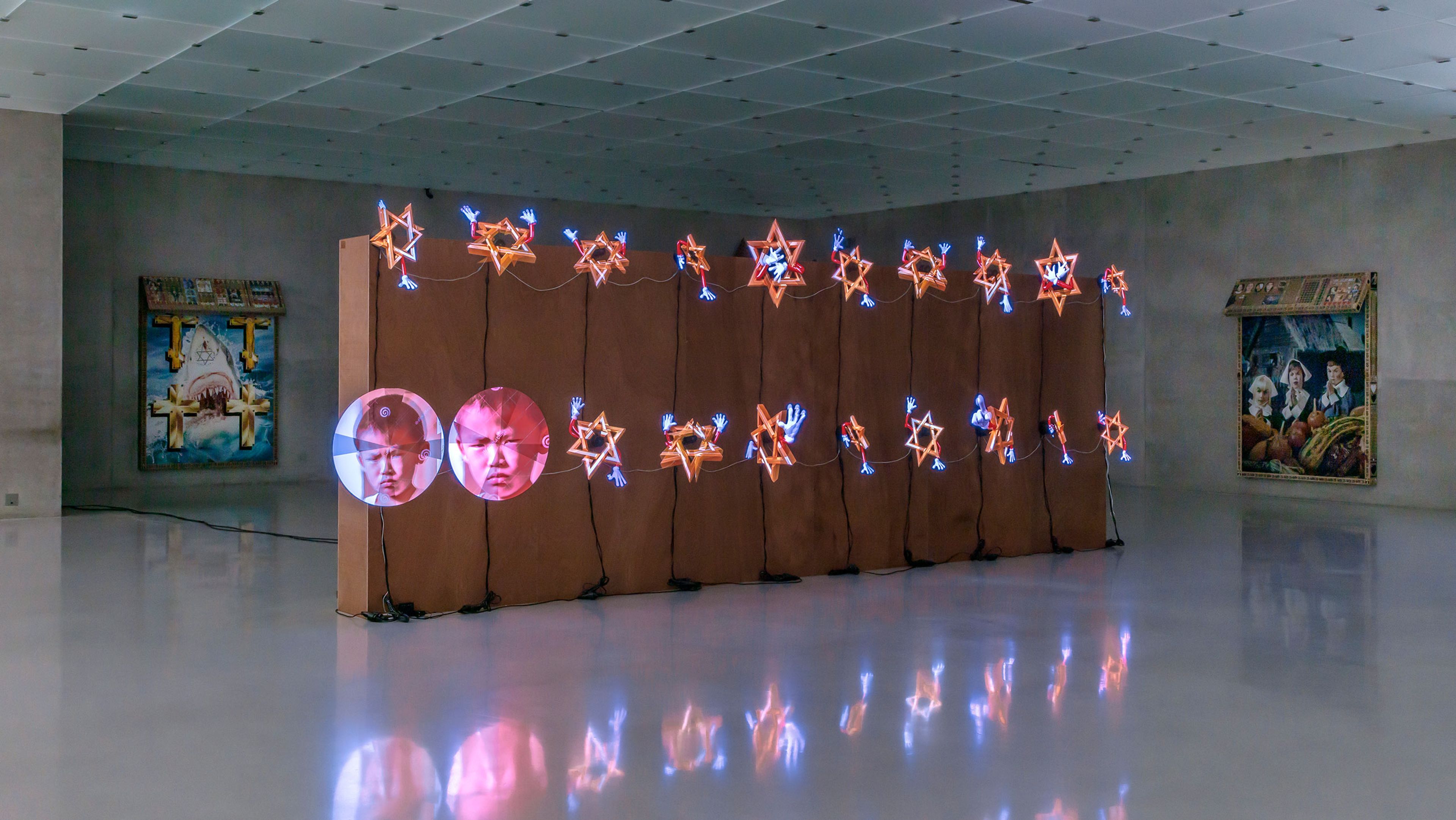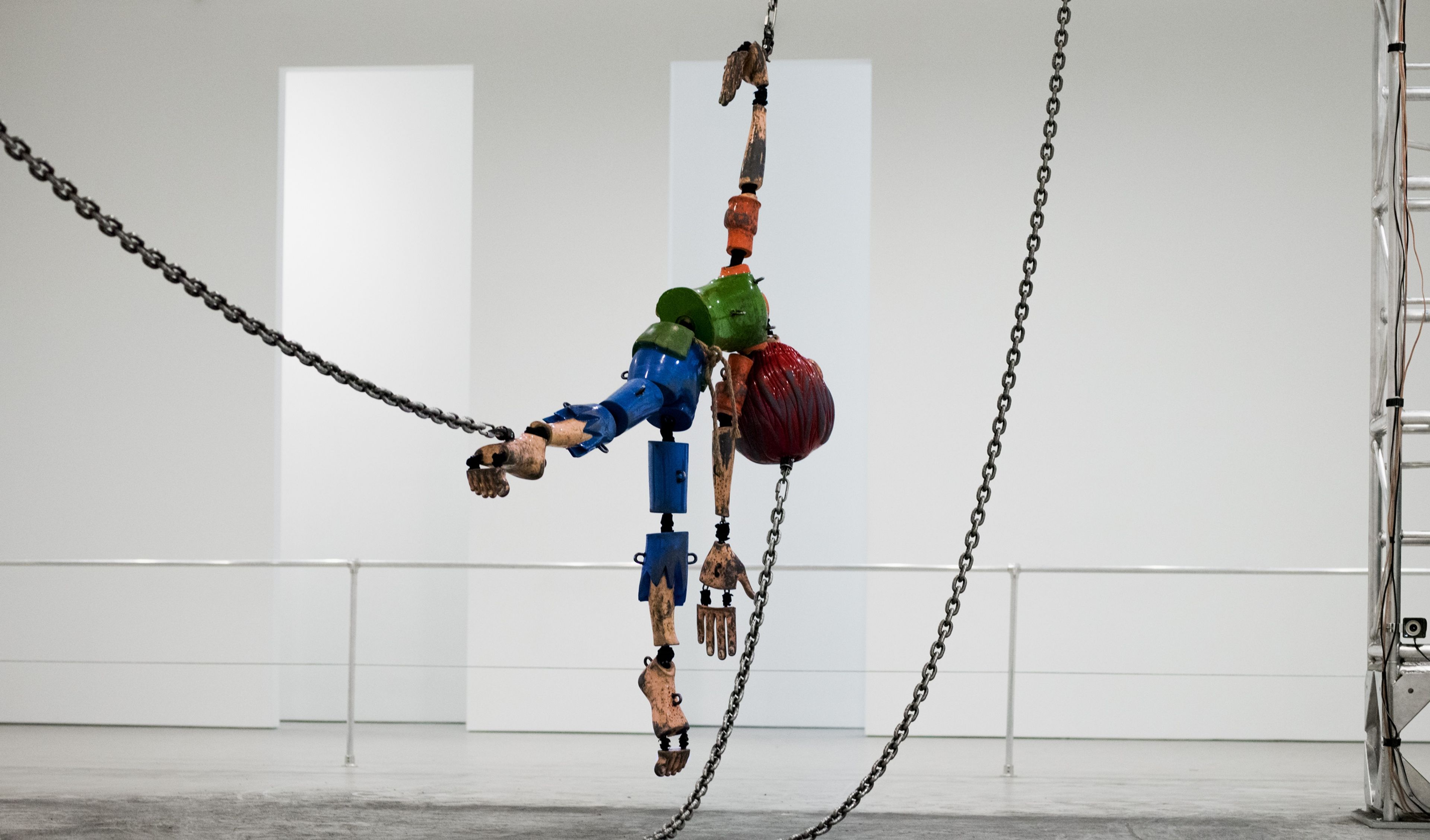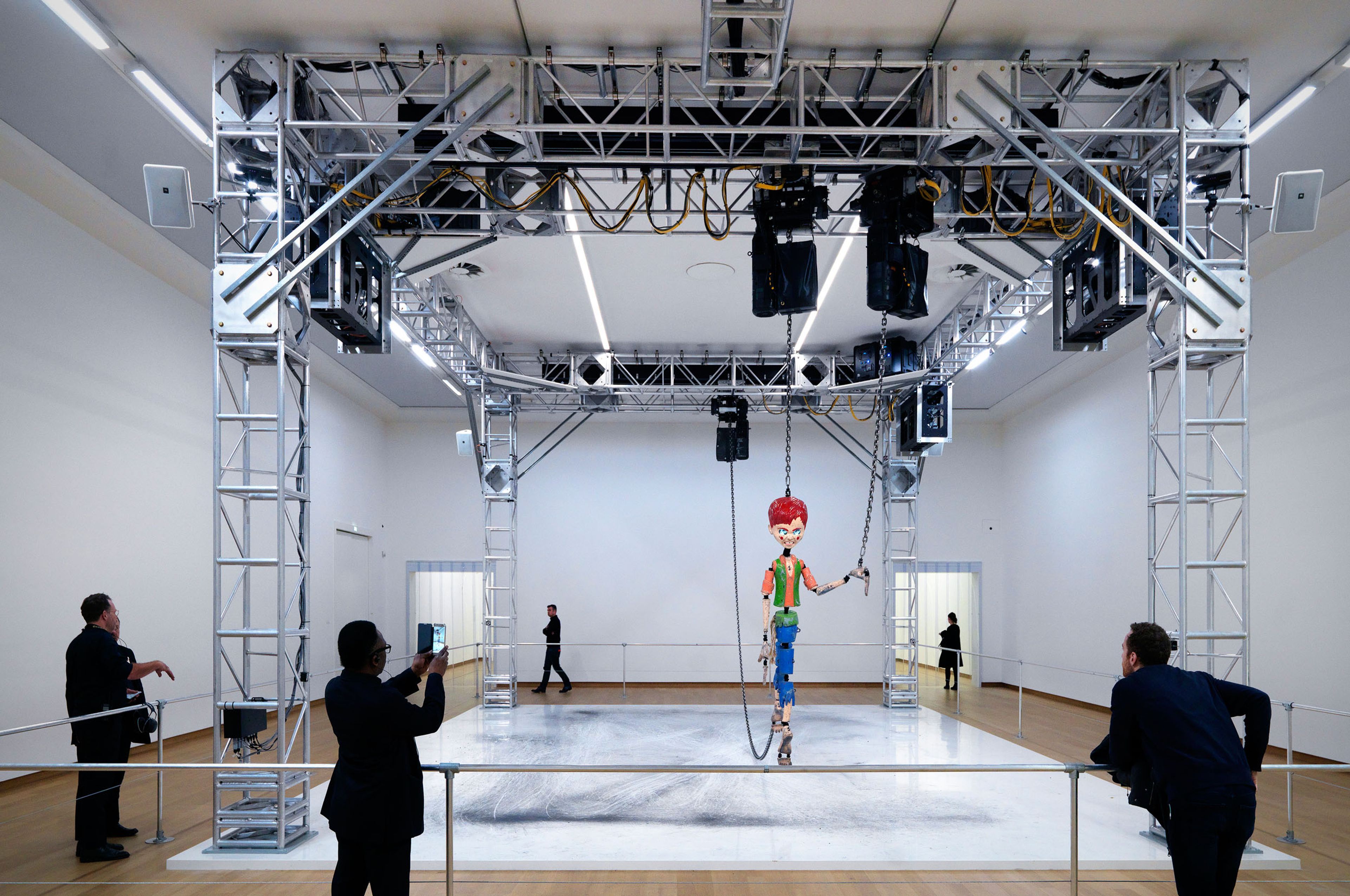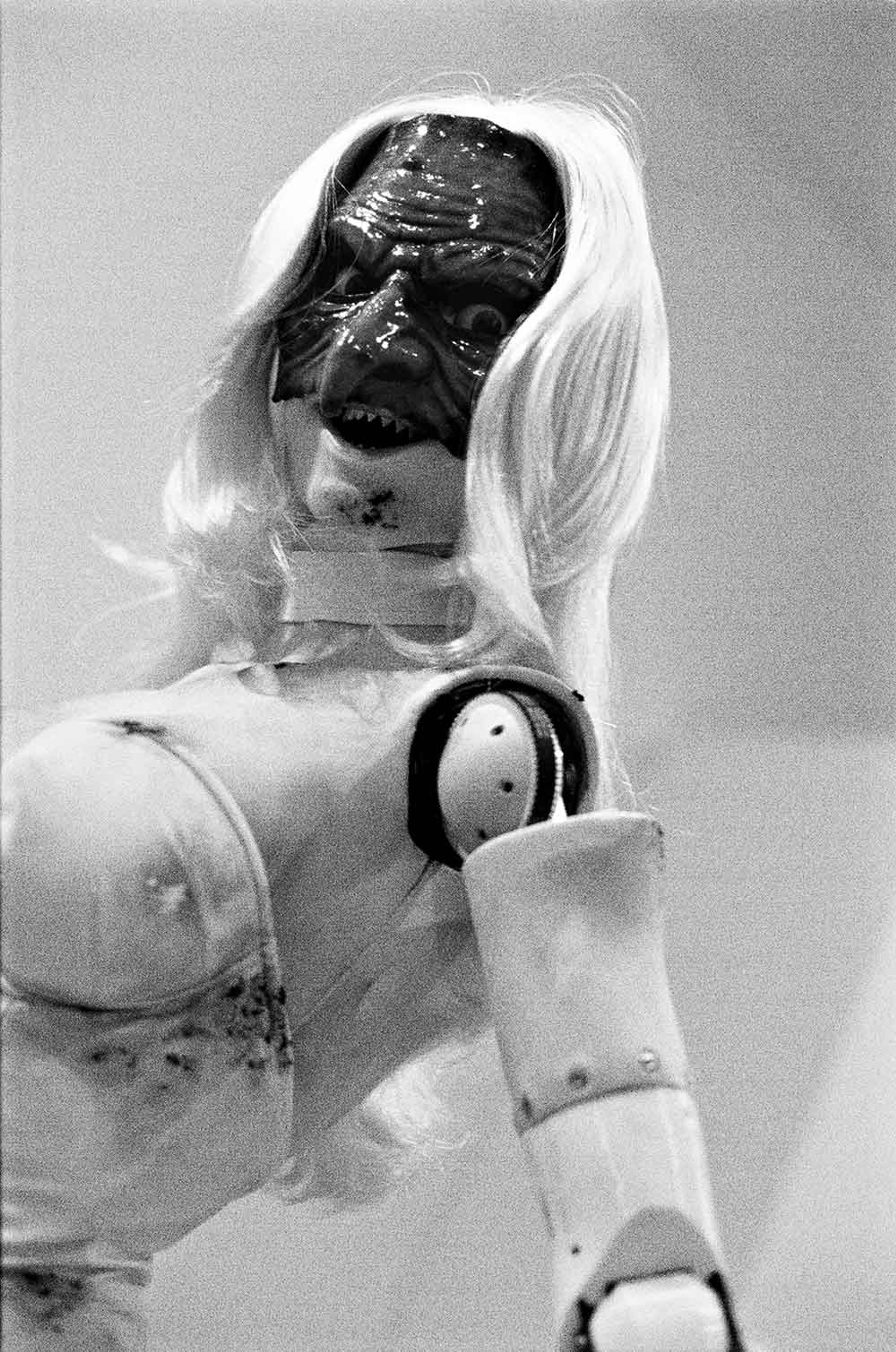Jordan Wolfson
Jordan Wolfson (b. 1980) is known for his thought-provoking works in a wide range of media, including video, sculpture, installation, photography, and performance. Pulling from the world of advertising, the internet, and the technology industry, his ambitious and enigmatic narratives frequently revolve around a series of invented, animated characters. Through his art, Wolfson probes difficult, often controversial topics and themes that underlie American culture and contemporary society.
Learn MoreSurvey
Exhibitions

Explore Exhibitions
Artist News
Biography

Jordan Wolfson, 2023, National Gallery of Australia. Photo by Karlee Holland. Courtesy National Gallery of Australia
Jordan Wolfson (b. 1980) is known for his thought-provoking works in a wide range of media, including video, sculpture, installation, photography, and performance. Pulling intuitively from the world of advertising, the internet, and the technology industry, he produces ambitious and enigmatic narratives that frequently revolve around a series of invented, animated characters. Through his art, Wolfson probes difficult, often controversial topics and themes that underlie American culture and contemporary society.
Wolfson was born in New York. In 2003 he received his BFA in sculpture from the Rhode Island School of Design. The artist joined David Zwirner in 2013 and has presented solo exhibitions of his work at the gallery in New York in 2014, 2016, and 2018. In 2020, ARTISTS FRIENDS RACISTS marked Wolfson’s fourth solo exhibition with David Zwirner. A concurrent installation of the works was on view at Sadie Coles HQ, London.
In June 2025, Little Room, a new virtual reality installation by the artist, premiered at the Fondation Beyeler, Riehen / Basel. Wolfson’s first solo exhibition in Australia opened in December 2023 at the National Gallery of Australia, Canberra, with the world premiere of his work Body Sculpture.
Solo exhibitions of the artist’s work were presented in 2022 at the Brant Foundation, New York; and Kunsthaus Bregenz. In 2018, the inaugural London presentation of Jordan Wolfson’s Colored sculpture took place in the Tanks at Tate Modern. The work features a sculptural figure of a boy suspended by chains and references the racism of the characters Huck Finn and Howdy Doody, as well as the Mad magazine mascot Alfred E. Neuman. Also in 2018, The Broad in Los Angeles presented Wolfson’s (Female Figure) and the Zabludowicz Collection in London presented 360: Jordan Wolfson. In 2016, the Stedelijk Museum in Amsterdam hosted a two-part survey of the artist’s work, MANIC/LOVE/TRUTH/LOVE. Jordan Wolfson: Ecce Homo/le Poseur, the most comprehensive survey of his work to date, was organized by the Stedelijk Museum voor Actuele Kunst (S.M.A.K.) in Ghent and presented in 2013.
Other institutions that have hosted solo presentations of Wolfson’s work include the Moderna Museet, Stockholm (2019); Schinkel Pavillon, Berlin (2018); Pond Society, New Century Art Foundation, Shanghai (2017); Cleveland Museum of Art (2015); Kunsthalle Wien, Vienna (2012); REDCAT, Los Angeles (2012); Kunstsammlung Nordrhein-Westfalen, Düsseldorf (2011); CCA Wattis Institute for Contemporary Arts, San Francisco (2009); Swiss Institute of Contemporary Art, New York (2008); Galleria d’Arte Moderna e Contemporanea di Bergamo, Italy (2007); and the Kunsthalle Zürich (2004). In 2014 a selection of Wolfson's video work was shown at the McLellan Galleries in Glasgow as part of the 6th Glasgow International.
Work by Wolfson is held in public collections worldwide, including the Art Institute of Chicago; The Broad, Los Angeles; Cleveland Museum of Art, Ohio; Fondazione Sandretto Re Rebaudengo, Turin, Italy; Galleria d’Arte Moderna e Contemporanea di Bergamo, Italy; Fonds national d’art contemporain (FNAC), France; LUMA Foundation, Zurich; Magasin III Museum and Foundation for Contemporary Art, Stockholm; Moderna Museet, Stockholm; Museum of Contemporary Art Chicago; Museum Ludwig, Cologne; The Museum of Modern Art, New York; Stedelijk Museum voor Actuele Kunst (S.M.A.K.), Ghent; Tate, United Kingdom; and the Whitney Museum of American Art, New York. He lives and works in Los Angeles.
Selected Press
Selected Titles

Request more information
